Axis Communications has announced the 8th generation of its custom-designed system-on-chip (SoC) made for network video. The ARTPEC-8 SoC was designed first and foremost to create new opportunities for analytics applications based on deep learning on the edge. In addition, the new SoC accelerates the array of capabilities and features first seen with the implementation of ARTPEC-7. These include superior imaging, enhanced security, and powerful compression. Furthermore, the fact that ARTPEC-8 was designed in-house gives Axis a level of control crucial to cybersecurity. Axis first introduced the ARTPEC chip in 1999.
Going forward, the new chip will be the basis for the vast majority of Axis network video products. Some of the first cameras to include this chip are the soon-to-be-launched AXIS Q3536-LVE/38-LVE Dome Cameras and AXIS Q1656-LE Box Camera.
 “With ARTPEC-8, Axis is leading the way toward a new era of exciting analytics based on deep learning on the edge,” says Johan Paulsson, Chief Technology Officer. We want to deliver the easiest access to actionable insights through the widest range of analytics on the market. Our ultimate goal is to contribute to creating a smarter, safer world by addressing more and more important use cases. Plus, ARTPEC-8 is 100% optimized for high-quality network video solutions. And, as always, we have complete control over every single transistor.”
“With ARTPEC-8, Axis is leading the way toward a new era of exciting analytics based on deep learning on the edge,” says Johan Paulsson, Chief Technology Officer. We want to deliver the easiest access to actionable insights through the widest range of analytics on the market. Our ultimate goal is to contribute to creating a smarter, safer world by addressing more and more important use cases. Plus, ARTPEC-8 is 100% optimized for high-quality network video solutions. And, as always, we have complete control over every single transistor.”
Deep-learning-based analytics on the edge. ARTPEC-8 supports powerful analytics applications based on deep learning on the edge where cameras have the processing power to analyze data within the camera itself. An example of deep-learning-based analytics is highly granular real-time object detection and classification that makes it possible to develop analytics that can distinguish between different kinds of objects, such as types of vehicles. This is the basis for AXIS Object Analytics. It also opens the door to other deep-learning-based analytics that deliver actionable insights for security, safety, and operational purposes.
The advantages of analyzing data on the edge. Deep-learning-based analytics on the edge, powered by ARTPEC-8, deliver additional benefits. Analyzing data on the edge — on the camera — means no information is lost in compression or transmission making results more reliable. It allows for faster alerts, which in turn lets users act instantly to protect people and property and make the right decisions about their operations. It creates cost savings because less bandwidth and storage and fewer servers are needed. Less bandwidth and storage also significantly reduce the risk of loss of sensitive data and fewer servers also improves scalability.
Increased analytics performance and the best imaging. ARTPEC-8 continues to facilitate Axis Lightfinder 2.0 and Axis Forensic WDR for the best image processing under difficult light conditions. These are part of the foundation for Axis Scene Intelligence technology, which increases the performance of analytics applications. The result is consistent analytics results and fast, accurate forensic search capabilities with minimal false alarms even under challenging surveillance conditions. Axis Scene Intelligence puts market-leading expertise from decades of experience with image processing to work.
Cybersecurity benefits. ARTPEC-8 builds on cybersecurity features introduced with ARTPEC-7 including signed firmware and secure boot. ARTPEC-8 supports Edge Vault for secure storage of cryptographic keys and certificates. Trusted Platform Module (TPM) for FIPS-compliant secure storage will be available in certain cameras.
AXIS Q1656-LE Box Camera, With ARTPEC-8 Chip
The first cameras to include the new ARTPEC-8 chip are: AXIS Q3536-LVE/38-LVE Dome Cameras, and AXIS Q1656-LE Box Camera.
The AXIS Q1656-LE Box Camera is a high-performance box camera offering premium Q-line functionality and exceptional video quality, even in poor light. The water-resistant, weatherproof camera includes a built-in wiper to guarantee clear images even in snow and rain.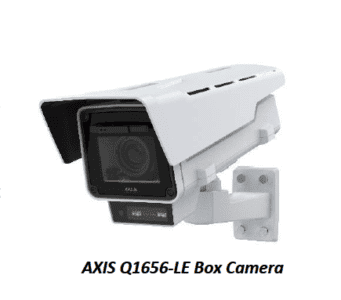
Based on the latest Axis system-on-chip (SoC), AXIS Q1656-LE offers support for advanced features and powerful applications based on deep learning on the edge. It includes AXIS Object Analytics for highly nuanced object classification and reliable detection with fewer false positives. And with support for ACAP, it’s possible to access a broad range of tailor-made applications based on deep learning on the edge available from Axis and our partners.
Featuring a 1/1.8” sensor, the AXIS Q1656-LE camera offers 4 MP resolution at up to 60 fps. It includes Lightfinder 2.0 to capture outstanding forensic images in low light scenes. Additionally, with selectable IR wavelength, it’s possible to choose between covert or semi-covert LED illumination.
Enclosed in a robust, impact-resistant IK10-rated casing, AXIS Q1656-LE can withstand winds up to 60 m/s. It includes remote zoom and focus as well as support for PoE and redundant DC power for flexible installation and maintenance. And enhanced security functionality prevents unauthorized access and safeguards the user’s system. AXIS Q1656-LE will be available through Axis distribution channels in Q4 2021.







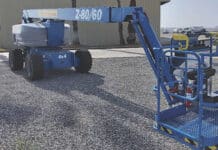
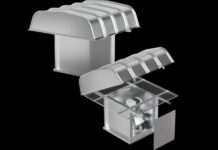


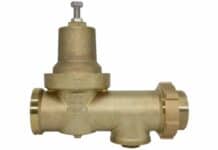



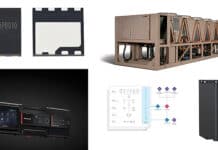



![[VIDEO] Job Order Contracting: Accelerating the Projects that Matter](https://facilityexecutivemagazine.kinsta.cloud/wp-content/uploads/2024/05/maxresdefault-324x160.jpg)
